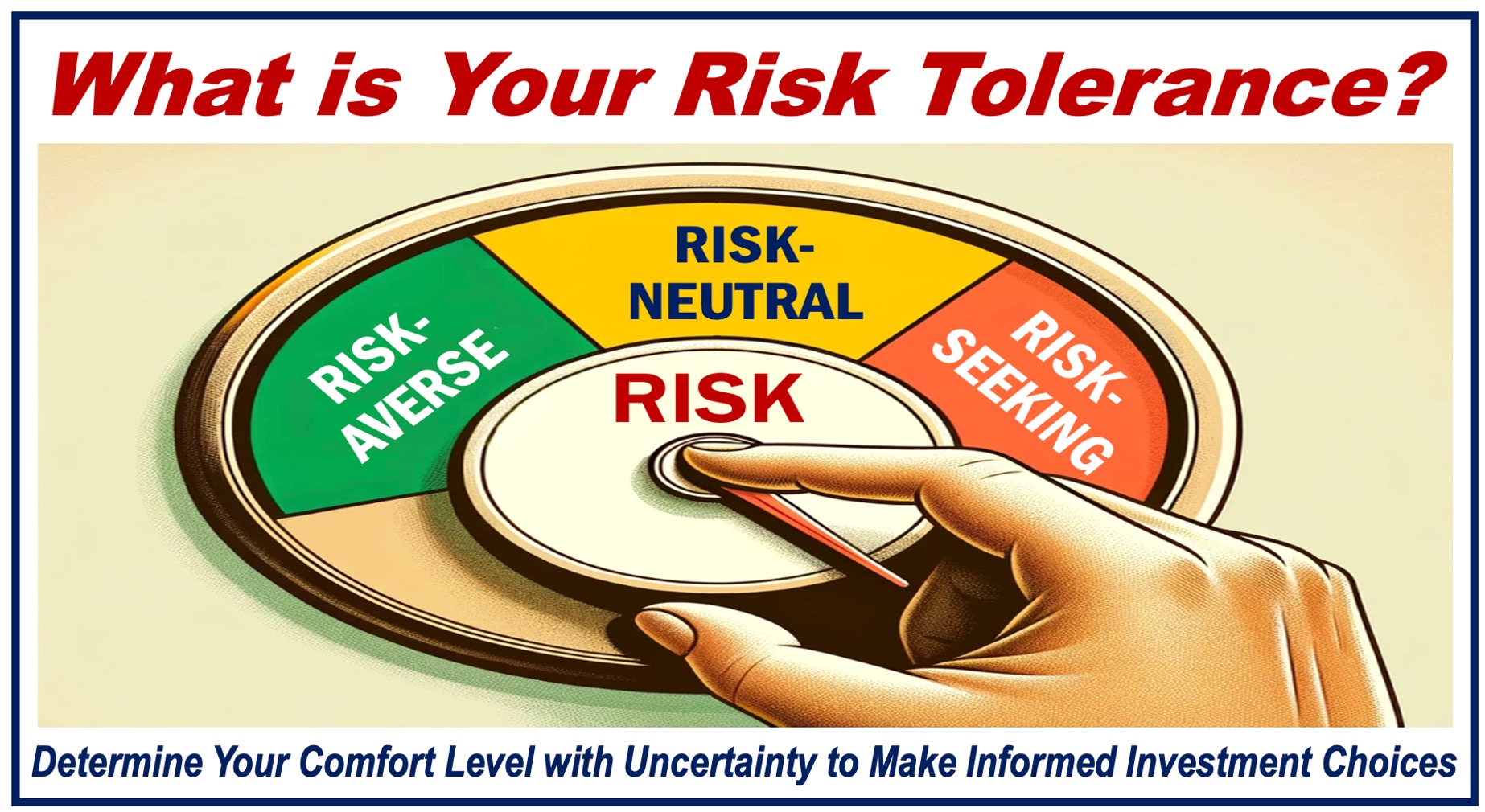Your attitude towards risk, that is, how much risk you are willing to accept when considering an investment, is your Risk Tolerance. The term also refers to how much risk you can bear (tolerate).
All investments carry a degree of risk. The term “risk,” in an investment context, means that you could lose some or all of your money. “Risk” also means that there is a potential for growth.
Most high-risk investments have the potential for significant loss or substantial gains.
“Risk tolerance” is a term that can also apply to non-financial or non-investment situations. For example, I might say: ‘I’m not sure whether I would like rock climbing. I don’t think I have a very high risk tolerance.
In an article published by Forbes.com, Rebecca Baldridge wrote the following:
“Risk tolerance governs the amount of potential losses you’re willing to risk in order to achieve a particular investment return. It’s part of the well-known risk-reward equation: The more risk you’re willing to take on, the higher the potential return you can get — and the larger the potential losses are you might end up with.”
Why Risk Tolerance Matters
To become a successful investor, you need to know what your risk tolerance is. If it is low, you won’t feel comfortable with investments that experience large price swings, even if there is a chance of making larger gains.
If your tolerance is low, you might sell an investment in a panic when the market dips. In this case, you would be the cause of the loss.
However, if you have a higher risk tolerance, you will probably be better prepared for those temporary dips. You would be less likely to panic sell.

Factors that Affect Your Tolerance
In the world of markets and investments, several factors can shape your personal risk tolerance. Let us look at some of them:
-
Time Horizon
Are you considering a short-, medium, or long-term investment? With a long-term option, you might be more willing to take risks because there is time to recover from short-term losses.
-
Financial Goals
What do you expect from an investment? If your financial goals are ambitious, a high-risk tolerance might be necessary.
-
Financial Situation
If you have a secure job with a steady, regular income, plus savings in place, you will be in a better position to handle riskier investments.
-
Personality
Are you a naturally cautious or adventurous decision-maker? Your personality type can play a role in how comfortable you feel with risk.
What Type of Risk Tolerance Do You Have
There are three main categories of risk tolerance:
-
Are You a Risk-Averse Investor?
Also known as a “conservative investor,” you prefer low risk and prioritize minimizing losses over maximizing returns. Your ideal investments are bonds and savings that safeguard capital over those with higher but riskier returns.
-
Are You a Risk-Neutral Investor?
You weigh options based on expected returns, not risk levels. You are content with either guaranteed outcomes or equivalent risky ventures. This type is also known as a “moderate investor.”
-
Are You a Risk-Seeking Investor?
Also known as an “aggressive investor” or a “risk seeker,” you have high comfort with risk. You seek the potential for the highest returns, even if it involves significant price fluctuations and volatility.
Risk Tolerance vs. Risk Appetite
The two terms are used in similar situations or contexts, but their meanings are quite different.
“Risk Tolerance” describes the level of risk you can bear. With the term “Risk Appetite,” however, the focus is on the level of risk you want to pursue. In other words, one is all about your capacity while the other is about your desire.
Somebody may have a high risk appetite but a low risk tolerance; they are willing to take big risks but may panic when things do not go according to plan.
It’s Not Set in Stone
Your risk tolerance may not stay constant throughout your life, potentially changing as your life circumstances evolve.
Consider revisiting your investment plan regularly, particularly after major life events, such as a significant career change, receiving an inheritance, or the birth of a child. You could then determine whether your risk tolerance still aligns with your portfolio.
-
Age May Influence Risk Appetite
Our appetite for risk tends to decrease with age. Seventy-year-old investors are generally more risk-averse compared to their thirty-year-old counterparts, who typically have a greater appetite for risk.
As we age, we tend to become more focused on preserving our wealth and ensuring a stable income. However, it is important to note that risk tolerance can vary within every age group.
Final Thoughts
Risk tolerance is a personal assessment of how much investment uncertainty you are comfortable with.
Before making investment decisions, ensure that you know what your risk tolerance is, and align your choices with your long-term financial goals and current life situation.
